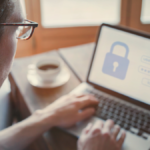Blogs
Fast, secure and reliable Wi-Fi is becoming the hospitality industry’s top amenity.
Are you in the game?
Fast, secure and reliable Wi-Fi is becoming the hospitality industry’s top amenity.
Are you in the game?

The world of technology is constantly evolving, and with that comes new challenges for parents trying to manage their children’s internet usage. Kids are spending more and more time online, whether it’s for homework, games, or social media. As a parent, it’s important to ensure that your child is using the internet safely and responsibly. In this article, we’ll take a look at some of the most effective strategies for managing your children’s internet usage. From setting boundaries and using parental controls to teaching your child about online safety, we’ll provide you with all the information you need to navigate the digital maze and ensure that your child is using the internet in a safe and healthy way.
Here are key steps to ensure your child’s safety and responsible internet usage:
To ensure your child’s safety and responsible internet usage, let’s delve into detailed explanations of these effective steps:
In today’s digital age, managing children’s internet usage is of utmost importance. The internet offers a vast array of information, entertainment, and opportunities for learning, but it also presents potential risks and dangers for young and impressionable minds. As parents and guardians, it is their responsibility to ensure that children navigate the digital maze safely and responsibly. By implementing effective strategies, we can create a safer and more balanced online environment for our children, protect them from inappropriate content, and promote open communication about their online experiences.
One of the primary concerns is exposure to inappropriate content, such as violence, explicit material, or cyberbullying. Without proper monitoring and restrictions, children can stumble upon these harmful elements that may negatively impact their emotional well-being and development. To effectively manage these risks and challenges, establishing clear boundaries and implementing parental controls is key. This includes setting age-appropriate content filters, limiting screen time, and consistently monitoring your child’s online activities. By understanding the risks and challenges associated with unrestricted internet access, you can take proactive measures to ensure your child’s online experience is safe, educational, and enriching.
Setting age-appropriate boundaries and guidelines is crucial when it comes to managing children’s internet usage. As technology continues to evolve at a rapid pace, it’s important for parents to establish clear rules that align with their child’s age, maturity, and developmental stage. Consider implementing parental controls and filters on devices and internet browsers. Establishing screen time limits is another important aspect of setting boundaries. By doing all this you can help ensure that your child navigates the internet responsibly.
Start by having open and honest conversations with your children about the potential risks and dangers they may encounter online. Teach them about the importance of protecting personal information, such as passwords, addresses, and phone numbers. Furthermore, instill in children the concept of digital citizenship. Teach them about the impact of their online actions and the importance of treating others with respect and kindness. Encourage them to think critically about the content they consume and share, and to be mindful of the potential consequences of their online interactions.
Parental control software allows parents to set limits, filter content, and monitor their children’s online activities. These tools provide a wide range of features such as blocking inappropriate websites, setting time limits for internet usage, and monitoring social media interactions. By utilizing these tools, parents can create a safe and controlled online environment for their children. By combining parental control software with effective communication, parents can ensure that their children have a positive and secure online experience.
Creating a specific area in your house where technology is not allowed can help create a healthy balance between screen time and other activities. By designating this space as a technology-free zone, you are encouraging face-to-face interactions, and quality time, and fostering a sense of togetherness. By doing this you are providing your children with the opportunity to engage in other activities and cultivate important offline skills while still enjoying the benefits of the digital world in a controlled and balanced manner.
Start by having an open and honest conversation with your children about the potential risks and dangers they may encounter online. Encourage them to come to you if they come across any inappropriate content, encounter cyberbullying, or feel uncomfortable in any online situation. By encouraging open communication and establishing trust, you can create a positive and supportive environment for your children to navigate the internet safely.
Start by explaining the concept of media literacy to your children. Help them understand that not everything they see or read online is accurate or trustworthy. Teaching critical thinking skills involves teaching children to think critically about the content they encounter online. You can engage in discussions with your children about the content they consume. By teaching critical thinking skills and media literacy, will not only help them make informed decisions online but also encourage them to be responsible digital citizens who can contribute positively to the digital world.
The internet is an ever-evolving landscape, with new platforms, apps, and online activities constantly emerging. It is important to be aware of these changes to effectively manage and guide children’s internet usage. Cyberbullying, online predators, inappropriate content, and scams are just a few examples of the threats that children may face online. By staying informed, parents can take proactive measures to protect their children and educate them about these risks. By staying updated, parents and guardians can navigate the digital maze with confidence and ensure that children have safe and positive experiences online. It empowers them to guide their children effectively, address any concerns or issues promptly, and foster responsible digital behavior in today’s fast-paced and ever-changing digital landscape.




